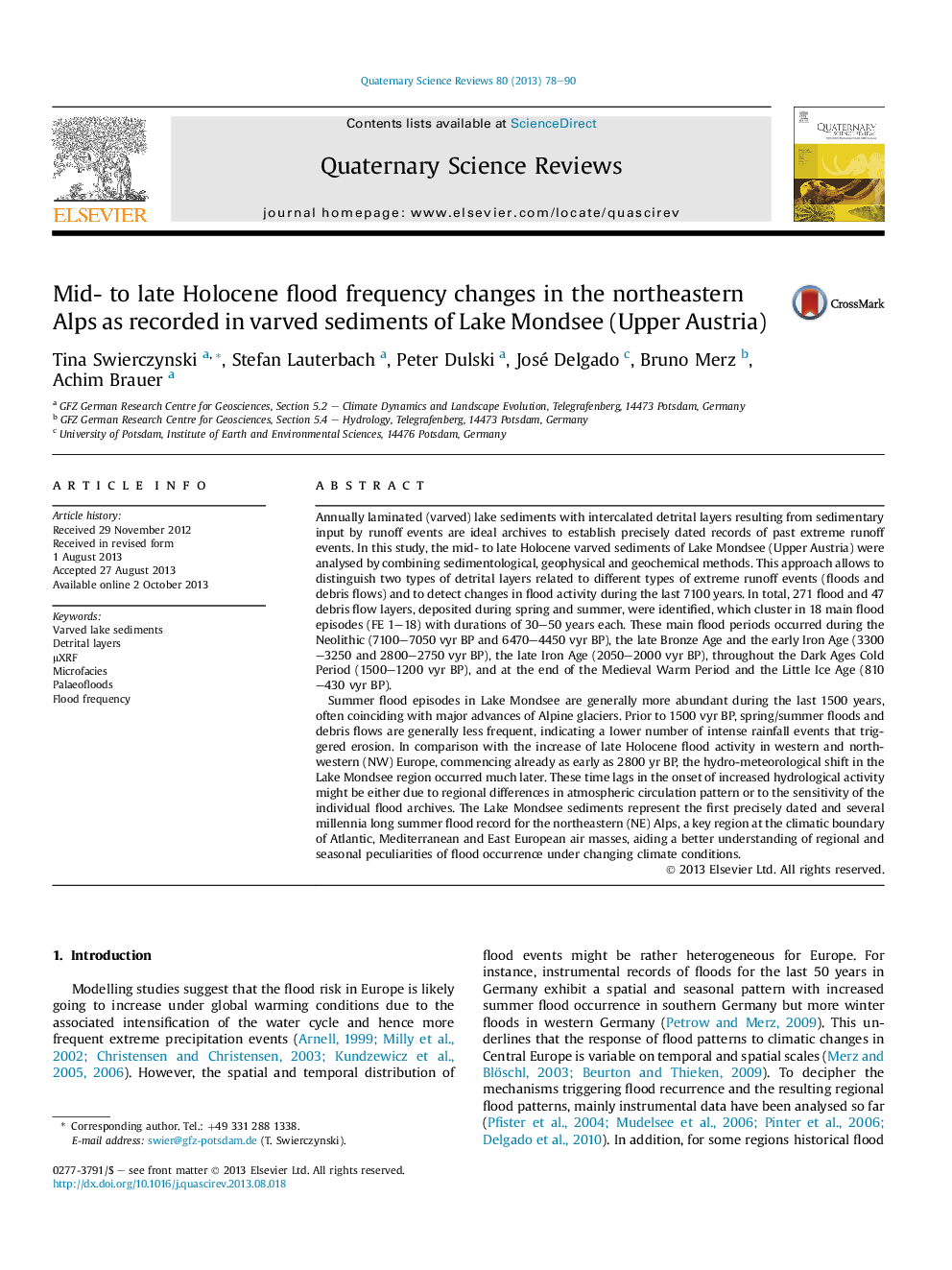| کد مقاله | کد نشریه | سال انتشار | مقاله انگلیسی | نسخه تمام متن |
|---|---|---|---|---|
| 4735337 | 1640854 | 2013 | 13 صفحه PDF | دانلود رایگان |

• Varved sediments of Lake Mondsee provide a 7100 yr record of spring/summer floods.
• Event layers are detected by combination of thin section and micro-element scanning.
• Flood frequencies indicate a variability on millennial to decadal time scales.
• Main shift towards more flood events occurred after 1500 varve years BP.
• More floods in the northern pre-Alps during periods of alpine glacier advances.
Annually laminated (varved) lake sediments with intercalated detrital layers resulting from sedimentary input by runoff events are ideal archives to establish precisely dated records of past extreme runoff events. In this study, the mid- to late Holocene varved sediments of Lake Mondsee (Upper Austria) were analysed by combining sedimentological, geophysical and geochemical methods. This approach allows to distinguish two types of detrital layers related to different types of extreme runoff events (floods and debris flows) and to detect changes in flood activity during the last 7100 years. In total, 271 flood and 47 debris flow layers, deposited during spring and summer, were identified, which cluster in 18 main flood episodes (FE 1–18) with durations of 30–50 years each. These main flood periods occurred during the Neolithic (7100–7050 vyr BP and 6470–4450 vyr BP), the late Bronze Age and the early Iron Age (3300–3250 and 2800–2750 vyr BP), the late Iron Age (2050–2000 vyr BP), throughout the Dark Ages Cold Period (1500–1200 vyr BP), and at the end of the Medieval Warm Period and the Little Ice Age (810–430 vyr BP).Summer flood episodes in Lake Mondsee are generally more abundant during the last 1500 years, often coinciding with major advances of Alpine glaciers. Prior to 1500 vyr BP, spring/summer floods and debris flows are generally less frequent, indicating a lower number of intense rainfall events that triggered erosion. In comparison with the increase of late Holocene flood activity in western and northwestern (NW) Europe, commencing already as early as 2800 yr BP, the hydro-meteorological shift in the Lake Mondsee region occurred much later. These time lags in the onset of increased hydrological activity might be either due to regional differences in atmospheric circulation pattern or to the sensitivity of the individual flood archives. The Lake Mondsee sediments represent the first precisely dated and several millennia long summer flood record for the northeastern (NE) Alps, a key region at the climatic boundary of Atlantic, Mediterranean and East European air masses, aiding a better understanding of regional and seasonal peculiarities of flood occurrence under changing climate conditions.
Journal: Quaternary Science Reviews - Volume 80, 15 November 2013, Pages 78–90